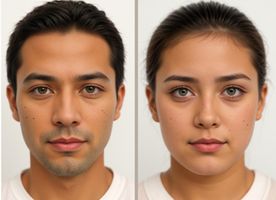Voice Feminization Surgery in Tijuana
Search and Compare the Best Clinics and Doctors at the Lowest Prices for Voice Feminization Surgery in Tijuana






































































































































































No Time?
Tell us what you're looking for and we'll reach out to the top clinics all at once
What does a Voice Feminization Surgery Procedure Involve?
There are several techniques to perform voice feminization surgery. The most common technique is called cricothyroid approximation, which involves elongating the vocal folds to increase vocal pitch. During this procedure, your surgeon brings the cricoid cartilage closer to the thyroid cartilage using metal plates or sutures. The cricoid cartilage is then shifted upward and backward, while the thyroid cartilage is moved downward and forward.
Another technique is called Wandler Glottoplasty. This technique connects the anterior 1/3 of your vocal folds using suture, while the remaining 2/3 act as female length vocal folds, which will yield a slightly higher voice. With this technique, no incisions are created in the neck since the entire procedure is performed through the mouth.
All techniques are performed under general anesthetic, so you will be asleep and comfortable throughout the surgery. The surgical reduction of Adam’s apple may be performed at the same time as voice feminization surgery.
How Long Should I Stay in Tijuana for a Voice Feminization Surgery Procedure?
Voice feminization surgery generally takes around 40 to 50 minutes to complete. The procedure is normally performed as an outpatient procedure, so you should be able to leave the hospital on the same day. However, you will need to stay in Tijuana for at least 8 to 10 days as you will have to attend follow-up checkups. During the follow-up checkups, your healing will be monitored and outer stitches will be removed.
It is strongly recommended that you organize for an individual to be present with you or to remain with you for, at minimum, the initial evening following your surgical procedure. Concerning the remainder of your stay in Tijuana, your course will be directed by the post-operation care strategy put together by your medical professionals who will monitor your recuperation journey prior to approving your departure back to your residence.
What's the Recovery Time for Voice Feminization Surgery Procedures in Tijuana?
The total recovery time until the tissue completely heals may take as long as six months. However, you should be able to return to most of your normal activities within a couple of weeks. If your job does not require the use of voice, you may be able to go back to work within one week. However, if it involves the use of voice, you need to take two weeks off work. Your surgeon will give you a recovery timeline, including the time you can go back to work and do strenuous activity.
What sort of Aftercare is Required for Voice Feminization Surgery Procedures in Tijuana?
For the first week, you may not be allowed to speak (absolute silence). It is important that you drink enough water to moisturize the vocal cords. In order to prevent acid reflux, your doctor may advise you to avoid chocolate, caffeine, peppermint, acidic foods, fatty foods, alcoholic drinks, and soda.
You will have to attend follow-up checkups at the third, sixth, and twelfth month after surgery. If you cannot travel to Tijuana for these checkups, make sure to talk to your surgeon. In most cases, you should be able to do the checkups with your local doctor back at home. Since voice feminization surgery only changes your pitch, you may still need a voice feminizing therapy to work on other vocal behaviors. The therapy will help you adapt to your new voice. It normally targets your vocal pitch, prosody, and vocal resonance. The therapy will also address speech rate, phrasing, articulation, voice quality, and nonverbal communication (such as eye contact and facial expression).
What's the Success Rate of Voice Feminization Surgery Procedures in Tijuana?
Voice feminization surgery is a safe and effective procedure. Many patients who have had the surgery are satisfied with the results. In this instance, success is ordinarily marked by helping the patient cultivate a feminine voice that aligns with their personal identity.
Nonetheless, one must bear in mind that the efficacy of the operation is strongly linked to the competence of the surgical practitioner, the well-being of the person involved, and compliance with after-surgery care and instructions. Consistent after-surgery assessments, ample relaxation, and linguistic rehabilitation often carry significant weight in securing a successful outcome of the operation.
Are there Alternatives to Voice Feminization Surgery Procedures in Tijuana?
If you do not want to undergo surgery to feminize your voice, voice therapy alone can be the alternative. The therapy can help you change your vocal characteristics, such as pitch and intonation, as well as nonverbal communication, such as gestures and facial expressions. A speech-language pathologist will help you learn and practice techniques to feminize your voice. The process of voice therapy may be lengthy, necessitating repetition and resilience.
This information has been accurately sourced and verified by a medical professional for its accuracy, however, we strongly recommend you to consult with your doctor before pursuing medical procedures overseas.







